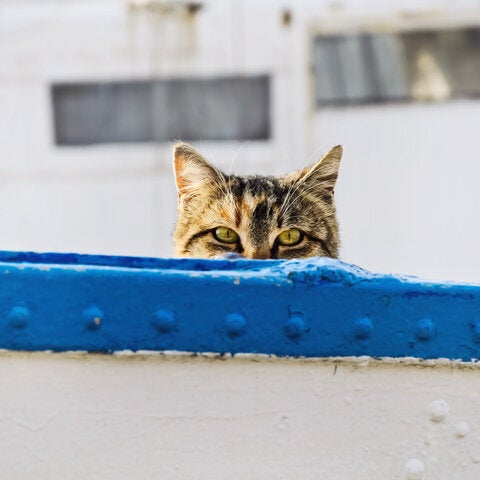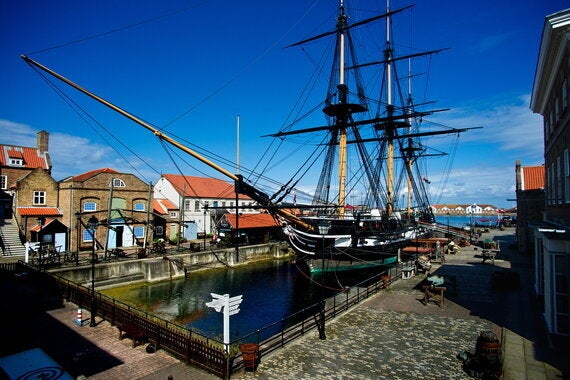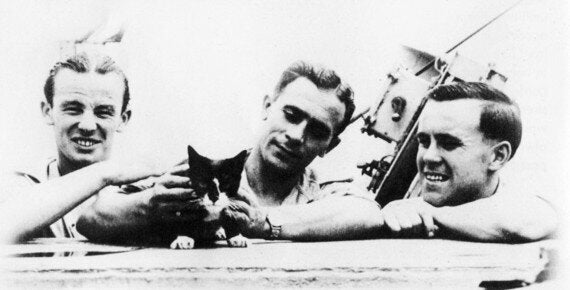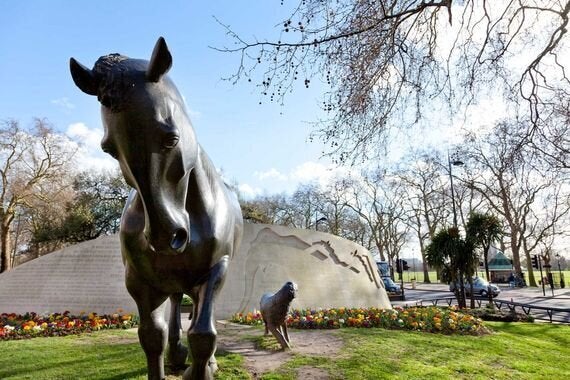
Ship's pets and animal mascots have been a common sight throughout the ages until that is just over 40 years ago in 1975 when the Royal Navy banned them for 'health and safety reasons.'
HMS Trincomalee in Hartlepool is one such illustrious vessel that had a long history of animals padding around its decks and into its briny bowels in search of scraps or else a friendly face. Pets - most commonly cats or dogs - were needed for companionship and for more practical purposes such as ridding a vessel of vermin. The crew would go for many months at sea, perhaps only stopping to re-stock and sometimes to pick up a more exotic crew member such as a monkey or parrot.
When British naval officers rescued a polar bear cub from drifting ice off Greenland during World War II, they took her on board their ship and made her their mascot. But before long, Barbara, as she was named, outgrew her new home and the crew deposited her at the Royal Navy's training facility on Whale Island, where a 'sailor's zoo' had been established in 1893 to accommodate those animals given to the Navy or brought back from the exotics. By 1935 there were lions, kangaroos and birds that had, however reluctantly, made 'sailor's zoo' their home.
The majestic HMS Trincomalee, now the oldest warship still afloat today, was built in Bombay, India, in 1817 for the Royal Navy shortly after the Napoleonic Wars at a cost of £23,000. Named after the 1782 Battle of Trincomalee, she was fitted with temporary masts and rigging, and before stopping to pick up guns and ammunition on the way to Britain, she arrived in Portsmouth in 1819. During her first commission, the 1,447-ton ship provided hurricane relief in Bermuda in 1847, as well as preventing an invasion of Cuba. After returning to Britain and being refitted, she headed for Vancouver in 1852 under the command of Captain Wallace Houstoun. From there she patrolled the west coast of North America and the Pacific Ocean.

Animal noises were a very audible feature of life on board a ship like HMS Trincomalee with livestock being kept as a ready food supply just yards from where the formidable ship's cook served up ropy but sometimes nourishing fare to crew members. When the ship was at sea and in battle mode, these poor creatures were often the first to be chucked over board if a lightening of the load was required.
Companion animals fared better as the men became attached to their feline and canine friends. When travelling to exotic places, it was also not unusual to pick up an animal such as a monkey or parrot or perhaps even a kangaroo or a far from cuddly bear. However we feel about the ethics of all this in modern day Britain, back then the company of a parrot that could be taught to talk and a monkey that was inherently clever (and often cheeky) provided endless hours of respite from the serious business of serving aboard a ship in the disease and death ridden 1800s.
Cats were perhaps the most common animal to be found on board ship. Mariners in ancient Egypt were known to keep cats aboard their vessels for the vital service they provided on the frontline of vermin control. If mice and rats weren't kept under control, they would quickly consume the men's provisions and threaten the voyage. The mongoose too was a relatively common ship's pet, adept at catching cockroaches and rats. Sailors throughout history also believed cats brought good luck, as well as companionship during long voyages. They also adopted cats from the distant ports they visited.
Perhaps the most well-known ship's cat was Simon, the black and white moggie that fought a valiant battle against vermin on HMS Amethyst. His story is fascinating. When an orphaned kitten is discovered in the Hong Kong docks in 1948 by a British soldier, he has no idea of the journey he's about to go on. Smuggled onto the HMS Amethyst, and named Simon by his new friends, the little cat quickly acclimatises to his new water-borne home, establishing himself as the chief rat-catcher in residence while also winning the hearts of the entire crew.

Then the Amethyst is ordered to sail up the Yangtze to guard the British Embassy, and tragedy strikes as the ship comes under fire from Communist guns. Many of the crew are killed and Simon is among those who are seriously wounded. The ship is held hostage for months, with the crew and Simon working together to keep morale up and devise a means of escape. Soon, news of Simon's heroism spreads and he becomes famous world-wide - but it is still a long journey back to England for both the crew and the plucky little cat known as Able Seacat Simon...Able Seacat Simon is the only cat to be among 65 animals to be awarded the PDSA Dickin Medal, the animal charity's equivalent of the Victoria Cross.
Although pets are now banned on board Royal Naval ships, the role of ship's mascots is commemorated by the 'Animals in War' memorial, which was unveiled by HRH the Princess Royal in 2004, the 90th anniversary of the start of World War I. Among the heroic horses and dogs is a solitary cat, walking alongside its comrades.

The inscription reads:
"This monument is dedicated to all the animals
that served and died alongside British and allied forces
in wars and campaigns throughout time."
A second inscription simply reads:
"They had no choice."
